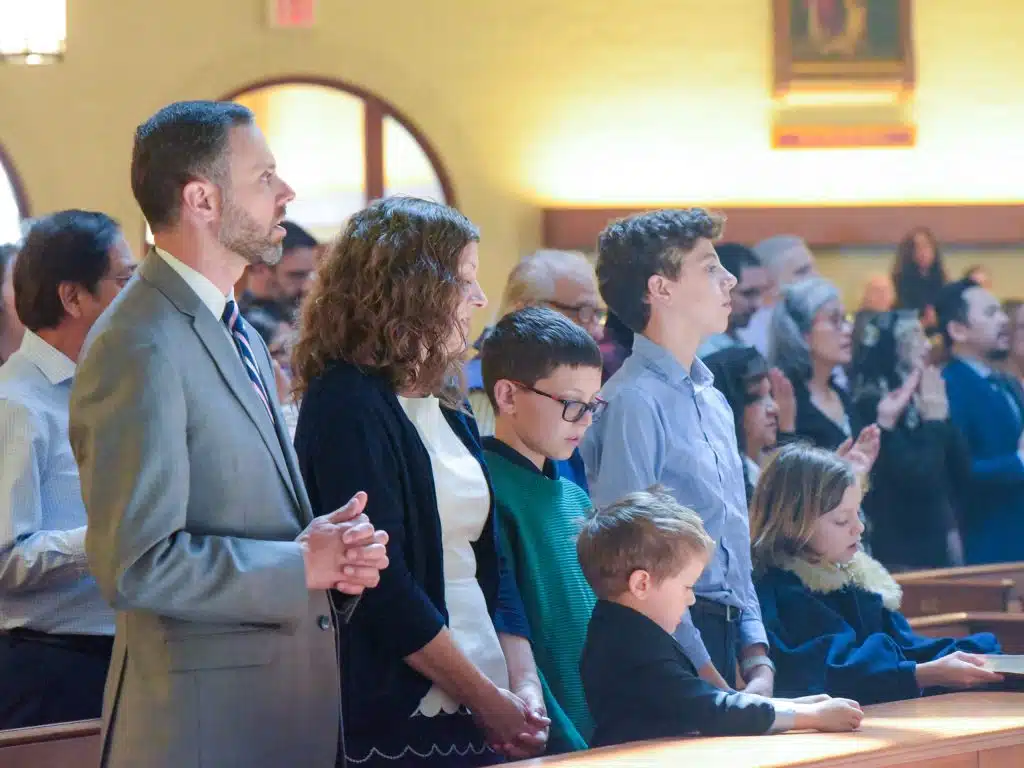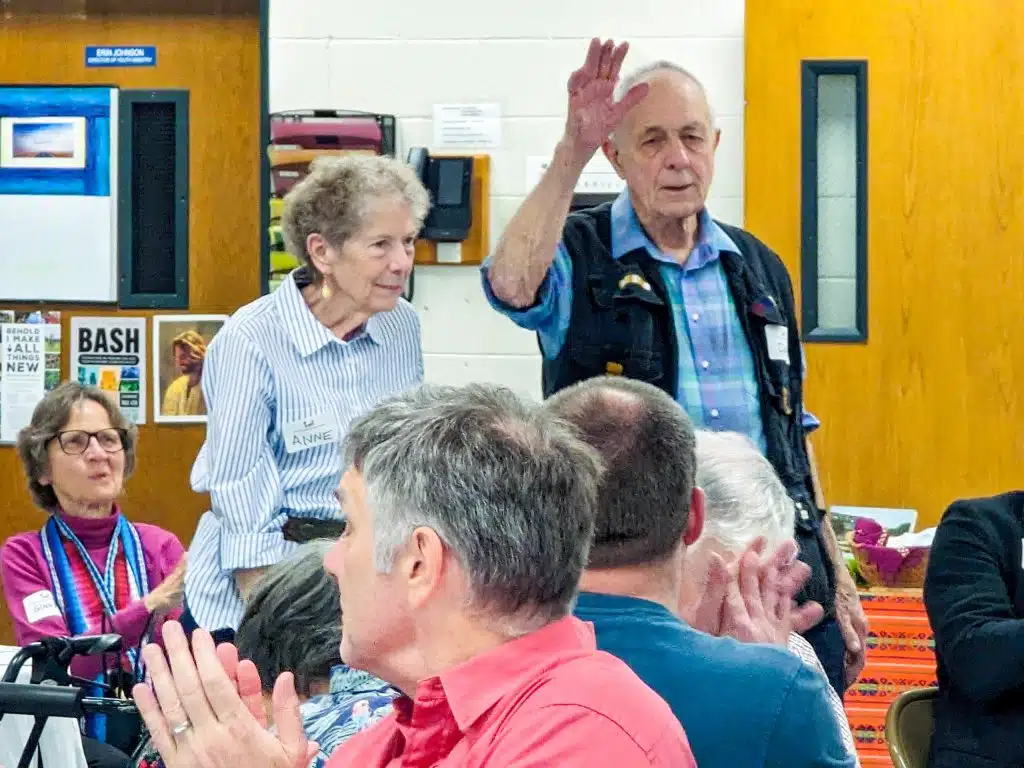EL MOZOTE, El Salvador — The clouds over the town of El Mozote looked as if they had been carefully placed in the sky that day, an arrangement of cotton in the baby-blue landscape overlooking the green valley below the feet of a large statue of El Salvador’s first Catholic saint.
With arms outstretched, the bronze figure, an unmistakable image of St. Oscar Romero, looks as if it is blessing the space below, much like Rio de Janeiro’s iconic Christ the Reedemer. The statue was purposely placed over the remote village in the highlands of El Salvador where, in 1981, about 1,000 men, women and children who lived below were tortured and subsequently massacred by death squads.
It was an unlikely place to take an Italian friend who, for years, had repeatedly asked me for a visit to my native country of El Salvador, a trip that, because of the schedules of two workaholics in two different continents, took about seven years and consultations with two Salvadoran priests to schedule. In 2012, when I met Thierry Bonaventura — a Sicilian with a French accent who works in Catholic Church communications — neither one of us would have guessed the trip we were planning would turn into a type of pilgrimage on the trail of El Salvador’s St. Romero.
Back then, the slain Salvadoran archbishop’s sainthood cause was still stuck at the Vatican. It would be given a green light to proceed by Pope Benedict XVI later that year but, even then, the slain archbishop’s figure loomed large in any discussion about El Salvador, and it was part of the country’s reality Thierry said he wanted to learn about. When we arrived in El Salvador Jan. 28, even the capital city’s main airport in Comalapa had been named after the saint, whose name or mere image once caused great alarm among the country’s authorities — as well as at the Vatican.
In 2019, what caused great alarm in me was traveling through the capital of San Salvador with a European who didn’t want a manicured version El Salvador, which meant heading into neighborhoods where the poor or middle-class live and are exposed to daily street violence. In recent years, El Salvador has ranked near or at the top of lists of most-violent countries not at war.
I had discussed the trip and safety concerns with my friend and fellow Salvadoran, Father Moises Villalta, who agreed to drive us so that he, too, could better plan and plot a yet-uncharted route for a number of friends and pilgrims from abroad.
Our first stop was San Salvador, a metropolitan area of 2.4 million, where most visits in search of St. Romero’s history take place: the Metropolitan Cathedral of San Salvador, where he is buried; the chapel of Divine Providence Hospital, where he was martyred March 24, 1980; and the small room nearby where he lived during his three years as archbishop, from 1977 until 1980.
Our trek began with a prayer at the saint’s tomb, a once-forgotten and dusty space in the cathedral’s basement, now decorated with an elegant bronze sculpture that depicts St. Romero as if he were sleeping while guarded by the four evangelists; a precious red jewel represents his heart.
In El Salvador, art of that caliber is a rarity. Thierry, a well-traveled European who has seen a great share of art, did not look as impressed as I’d been when I first saw it. Maybe, like me, he simply was tired, but I wondered if it was because he’d earlier said he wasn’t interested in seeing monuments and was more interested in the daily life of the Salvadoran people.
St. Romero, however, must have been listening to his wishes because, en route to our next stop, the Divine Providence Chapel, heavy traffic deviated us toward the Divine Providence Bakery in Antiguo Cuscatlan. The bakery is owned by a couple in their 70s whose wedding St. Romero had officiated.
Over a cup of coffee, Adilia Villalta told us that though she had been civilly married for a few years in the 1970s to husband, Guillermo, he wouldn’t agree to a Catholic Church wedding until one day, out the blue, he said he’d agree to it but only if St. Romero, a frequent visitor and friend, officiated it.
St. Romero quickly made some phone calls to clear it with their parish priest, Adilia said, and even secured a private chapel frequently used for society weddings. When some church officials asked why he was using a chapel reserved for “special” occasions for the marriage of a working-class couple, he replied, “Well, they’re special to me,” Adilia recalled.
Perhaps surprised by the Italian’s interest in their story, or perhaps because they simply are generous of heart, they showed Thierry a rare, well-worn book about the saint, which looked as if it had been read over and over. It was written by Tiberio Romero, the saint’s brother, and they gifted it to him. Thierry, in turn, reached into a pocket in his pants and, to their great surprise and my great jealousy, gave them a present that brought tears to Adilia’s eyes: a rosary Pope Francis had given him. The three hugged like long-lost friends and cleared tears near the bread display.
Mystified by what had happened and worn out by seven previous days of intense work, I lay in bed that evening sleepless, dreading having to wake up for a 6 a.m. Mass at nearby St. Francis Parish.
We were in the pews quietly waiting for Mass to begin when I noticed the celebrant was Cardinal Gregorio Rosa Chavez, a close friend of the saint. After Mass, the cardinal greeted the children on the way to the parish school and stopped to meet us. He spoke for a long time in Italian to our foreign pilgrim and gave him gifts, including a book on daily meditations based on the saint’s writings.
In almost 20 years of traveling between the U.S. and El Salvador, I’ve never bumped into the cardinal, even when he was an auxiliary bishop for years, and I wondered how it was possible that an Italian who’d been in the country for less than 24 hours could come into direct contact with those who intimately knew of the saint’s holiness as well as his frustrations.
Like the clouds in El Mozote, it was as if they had been carefully picked and placed in our path by a hand we couldn’t see.


